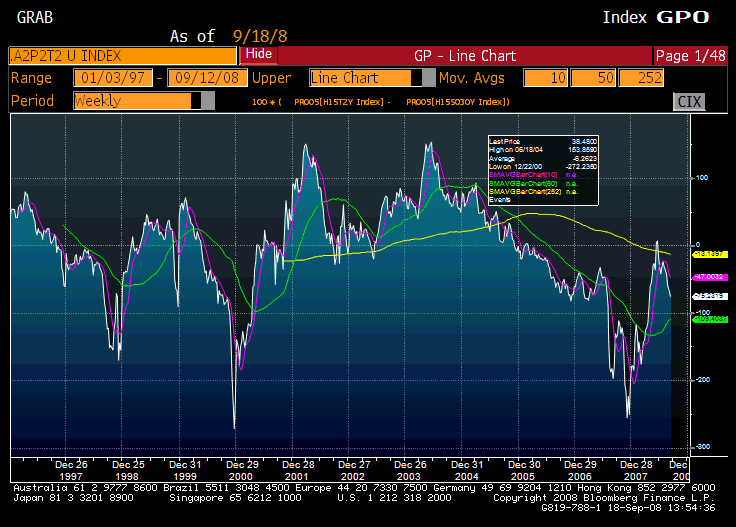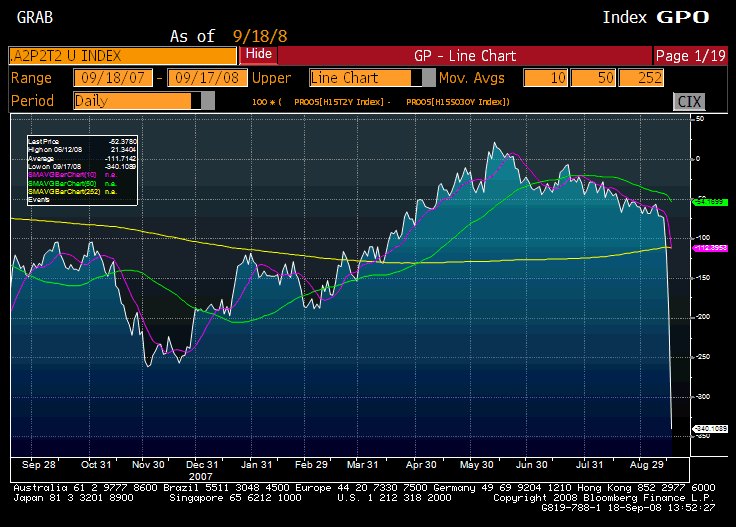Government Policy Created Too Hastily
I have been no fan of naked short selling; I have long argued that the brokers must locate shares before a short sale can be done.? Anything less than that is fraud.? But I do not support eliminating shorting, even though I almost never do it.? What would be the effects of eliminating shorting?
- No more merger arbitrage funds.
- No more statistical arbitrage funds.
- Wait, no more arbitrage?
- 130/30 funds go away.
- Other quant funds go away.
- Barbarian hedge funds that do real research go away.
- Put option implied volatility goes way up.? (A lot depends on whether specialists/market-makers can still short…)
- Because of put-call parity, call implied volatility goes up as well.
- Players move to credit default swaps, oh wait, might those get banned as well?
- Those relying on securities lending income lose out.
Eliminating shorting is stupid.? Enforcing getting a locate is smart.
Now for something that could be smart or dumb, depending on how it is done.? The possibility of a new RTC could be a good or a bad idea.? The main criterion is whether it is proactive or reactive.? My answer my surprise many: reactive is good, proactive is bad.
What we don’t want to do is provide a place for companies to dump lousy assets at inflated prices.? Instead, a new RTC should be a last resort place that the assets of failed companies go to until they are disposed of.? Common and preferred equity should be wiped out, and bondholders should take haircuts.? New loans should be senior to all old loans, similar to the situation with AIG.
Anyone going to the new RTC should feel pain, and a lot of it.? It should be the last resort for companies that are failing.? It should not try to keep companies alive, but merely conserve the value of assets, and prevent contagion.? Remember, if the risk is not systemic, the government should not try to bail it out.




